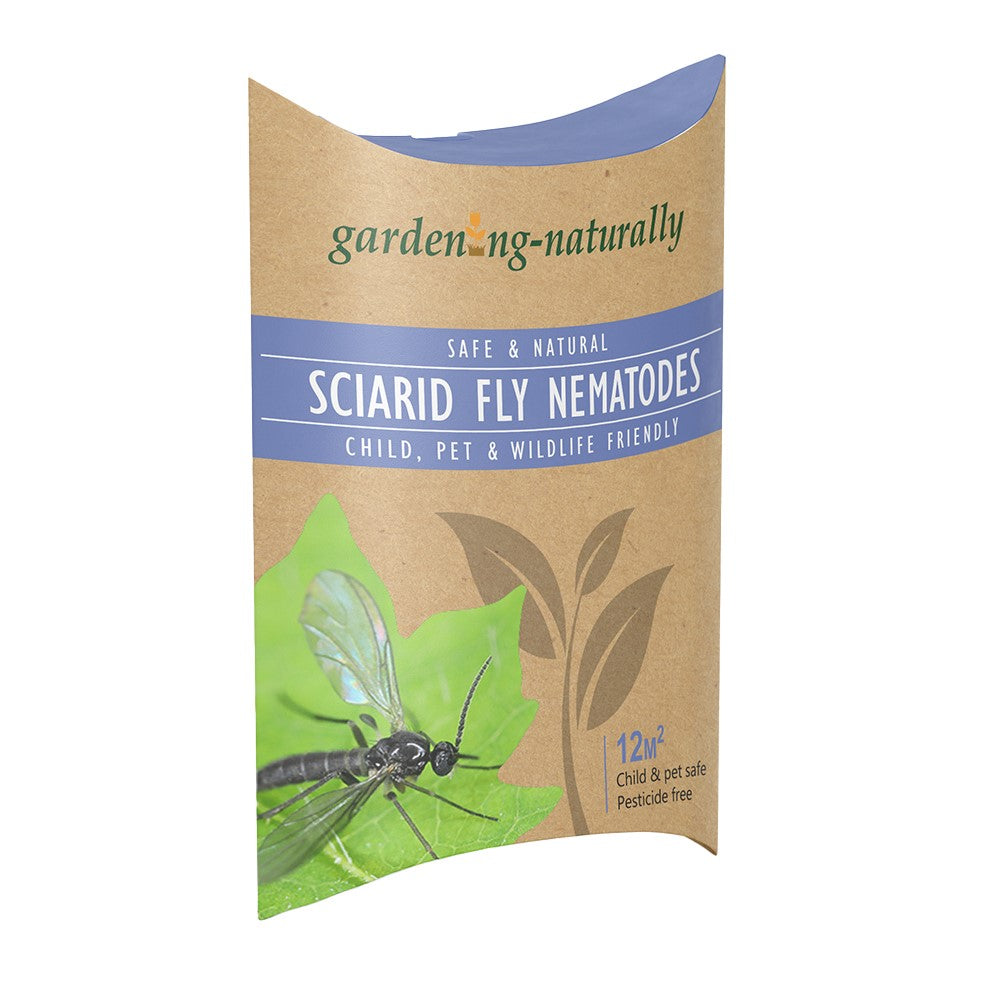Sciarid flies, often called fungus gnats, can be a frustrating pest for gardeners and plant enthusiasts alike. These tiny black flies are commonly seen hovering around houseplants or in greenhouses, where they thrive in damp compost.
While the adult flies are more of a nuisance, their larvae can cause significant damage to plant roots, leading to weakened and unhealthy plants. Luckily, there are practical ways to address this issue and protect your plants.
Understanding Sciarid Flies
Sciarid flies lay their eggs in moist compost, where the larvae hatch and feed on decaying organic matter. However, when food is scarce, they start nibbling on the fine roots of plants. This root damage can stunt growth, cause yellowing leaves, and leave plants susceptible to other issues. Preventing infestations and treating existing ones is crucial for maintaining healthy plants.
Using Sciarid Fly Nematodes
Sciarid fly nematodes are a natural and safe way to control the larvae in the soil. These microscopic organisms actively seek out and attack the larvae, stopping them from causing further damage to your plants. They are simple to use and highly targeted, meaning they only affect the sciarid fly larvae and leave beneficial insects unharmed.
How to Use Sciarid Fly Nematodes:
- Preparation: Mix the nematodes into water as per the instructions provided.
- Application: Water the nematode mixture into the compost or soil where the sciarid fly larvae are present.
- Timing: Apply nematodes when larvae are active, usually during the warmer months or when you first notice the flies.
The nematodes will work below the surface, reducing the larvae population and breaking the lifecycle of the sciarid flies.
See our Nematode FAQ here.
Benefits of Yellow Sticky Traps
While nematodes target the larvae in the soil, yellow sticky traps are ideal for catching the adult flies. These traps are coated with a non-toxic adhesive that attracts sciarid flies due to their bright yellow colour. By capturing the adults, the traps help prevent further egg-laying and reduce the overall population.
Tips for Using Yellow Sticky Traps:
- Placement: Position traps near the affected plants, either on the soil surface or hanging just above the foliage.
- Replacement: Replace traps regularly when they become full or less sticky.
- Monitoring: Use the traps to monitor the presence of adult sciarid flies and gauge the success of your treatment efforts.
Combining Nematodes and Traps for Complete Control
To fully address a sciarid fly infestation, combining nematodes with yellow sticky traps is highly recommended. The nematodes eliminate the larvae in the soil, while the traps manage the adult population. This two-pronged approach not only helps eradicate an existing problem but also prevents reinfestation.
Preventing Future Infestations
Once you’ve tackled the sciarid flies, taking steps to prevent them from returning is essential:
- Avoid Overwatering: Sciarid flies thrive in damp compost, so allow the soil to dry slightly between watering.
- Use Quality Compost: High-quality, well-draining compost reduces the chances of sciarid flies taking hold.
Sciarid flies can quickly become a headache for gardeners, but with a combination of sciarid fly nematodes and yellow sticky traps, you can regain control of your plants. These methods work together to target both the larvae and adults, ensuring your plants stay healthy and vibrant.
